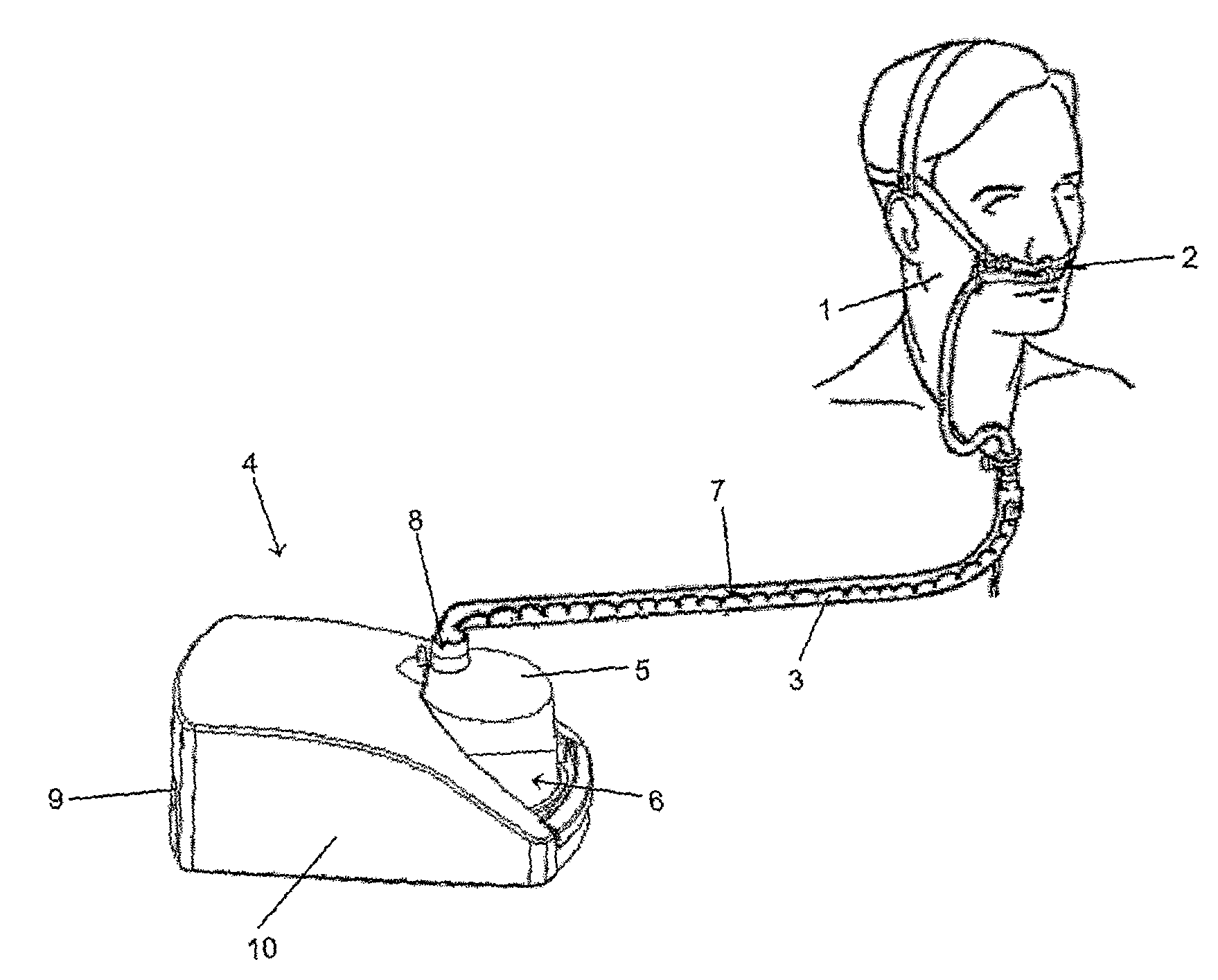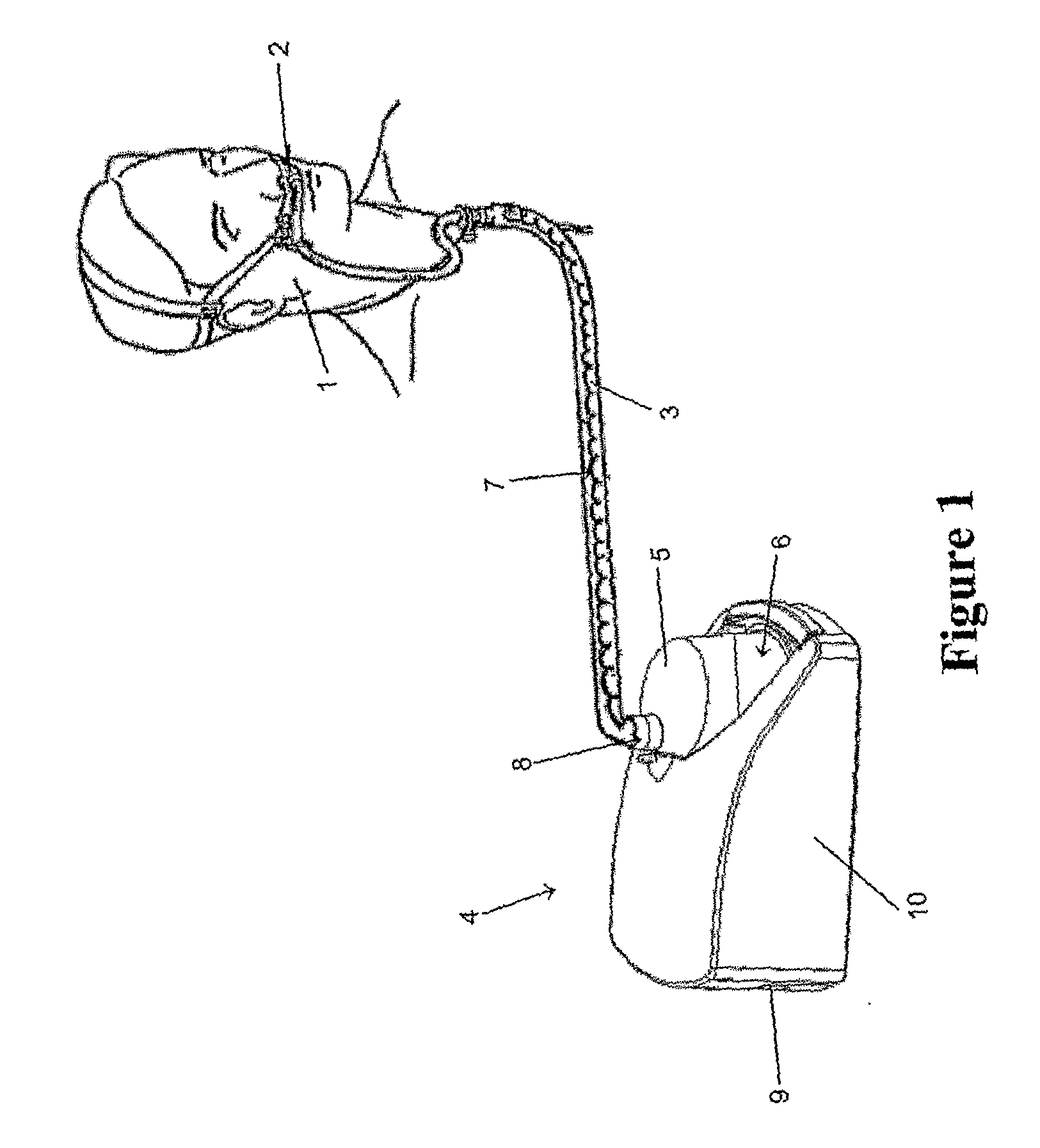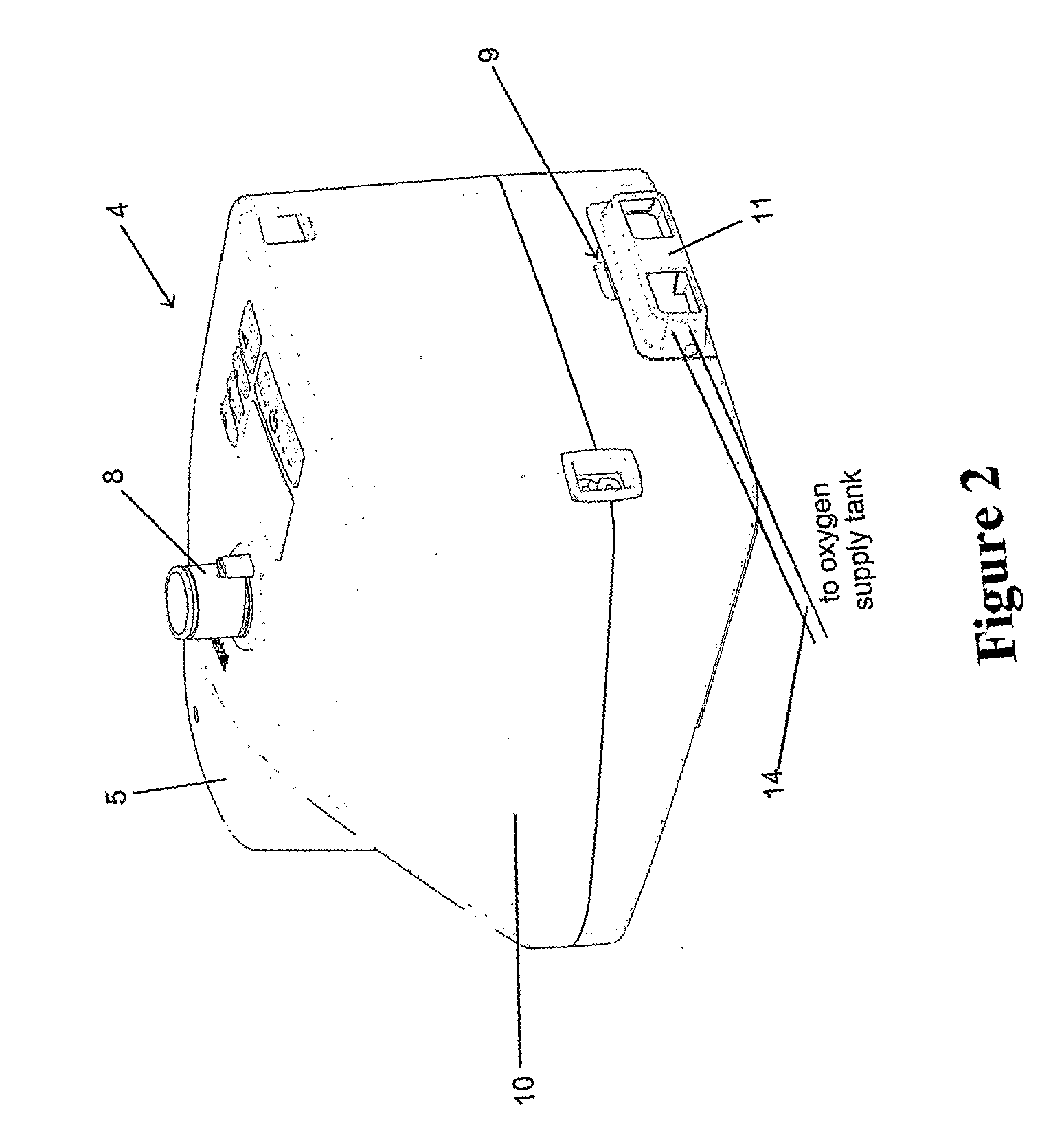Breathing Assistance Apparatus With a Manifold to Add Auxiliary Gases to Ambient Gases
a technology of auxiliary gases and humidification apparatus, which is applied in the direction of valve details, valve arrangement, operating means/releasing devices of valves, etc., can solve the problems of adverse effects of cpap treatment, difficulty in using cpap, and significant side effects of patients' upper airway, so as to reduce the overall humidity of the gases delivered, the effect of increasing the fraction of oxygen
- Summary
- Abstract
- Description
- Claims
- Application Information
AI Technical Summary
Benefits of technology
Problems solved by technology
Method used
Image
Examples
Embodiment Construction
[0033]The breathing assistance apparatus of the present invention includes a manifold that is preferably provided with or retrofittable to gases supply and humidifying devices. The manifold allows gases from an oxygen concentrator to be combined with the flow through a gases supply and humidifying device, most usually air. The combined output of oxygen and other breathing gases (air) is then humidified.
[0034]The breathing assistance apparatus and manifold of the present invention provides a safe method to add oxygen to the input air stream of a gases supply and humidifying device and reduces the amount of accumulation of oxygen within the gases supply device, reducing fire risk should sparking occur within the device.
[0035]The present invention provides a breathing assistance apparatus where the flow of gases passes in sequence through a gases supply means or flow driver (such as, a blower, fan or compressor), humidification chamber, heated delivery circuit, then to a patient interf...
PUM
 Login to View More
Login to View More Abstract
Description
Claims
Application Information
 Login to View More
Login to View More - R&D
- Intellectual Property
- Life Sciences
- Materials
- Tech Scout
- Unparalleled Data Quality
- Higher Quality Content
- 60% Fewer Hallucinations
Browse by: Latest US Patents, China's latest patents, Technical Efficacy Thesaurus, Application Domain, Technology Topic, Popular Technical Reports.
© 2025 PatSnap. All rights reserved.Legal|Privacy policy|Modern Slavery Act Transparency Statement|Sitemap|About US| Contact US: help@patsnap.com



